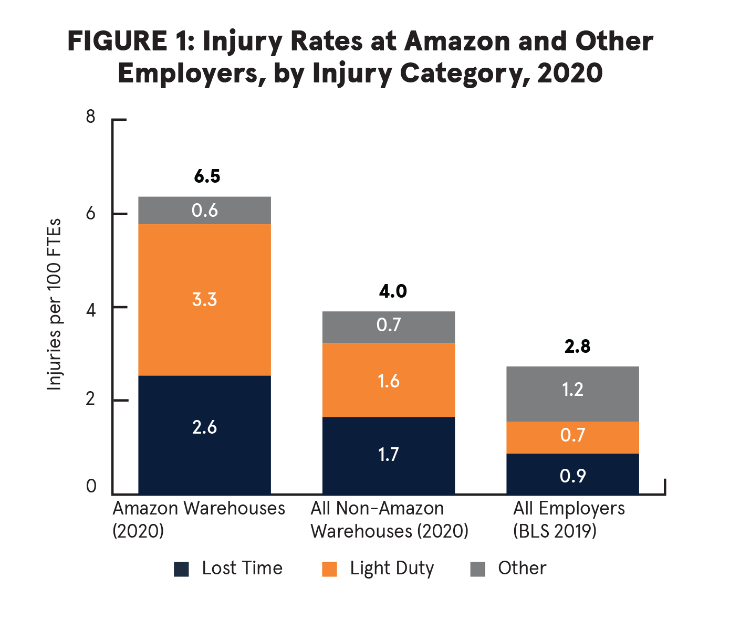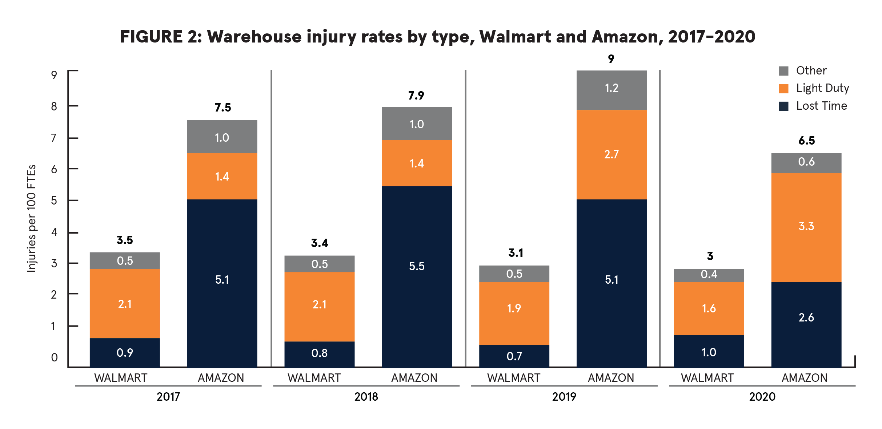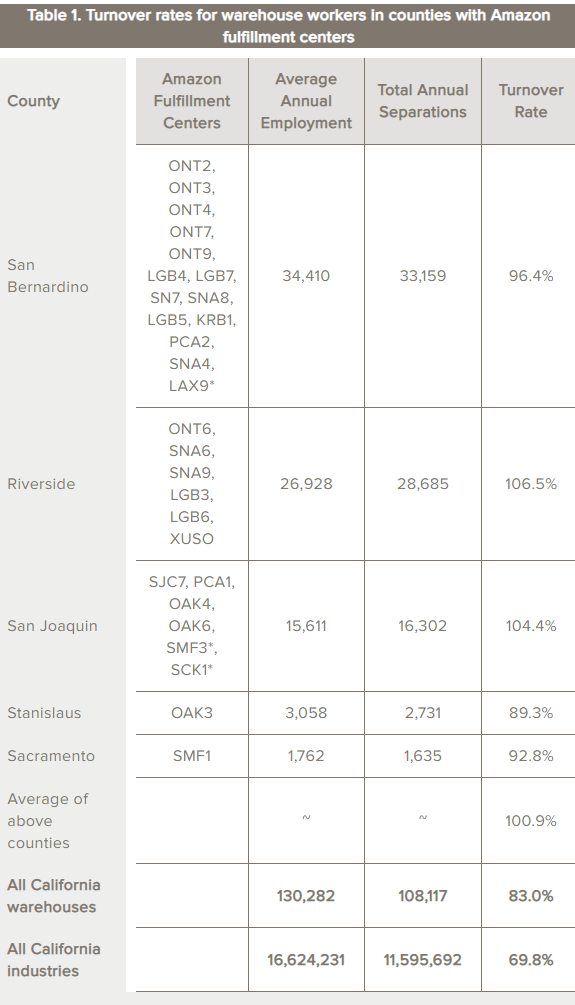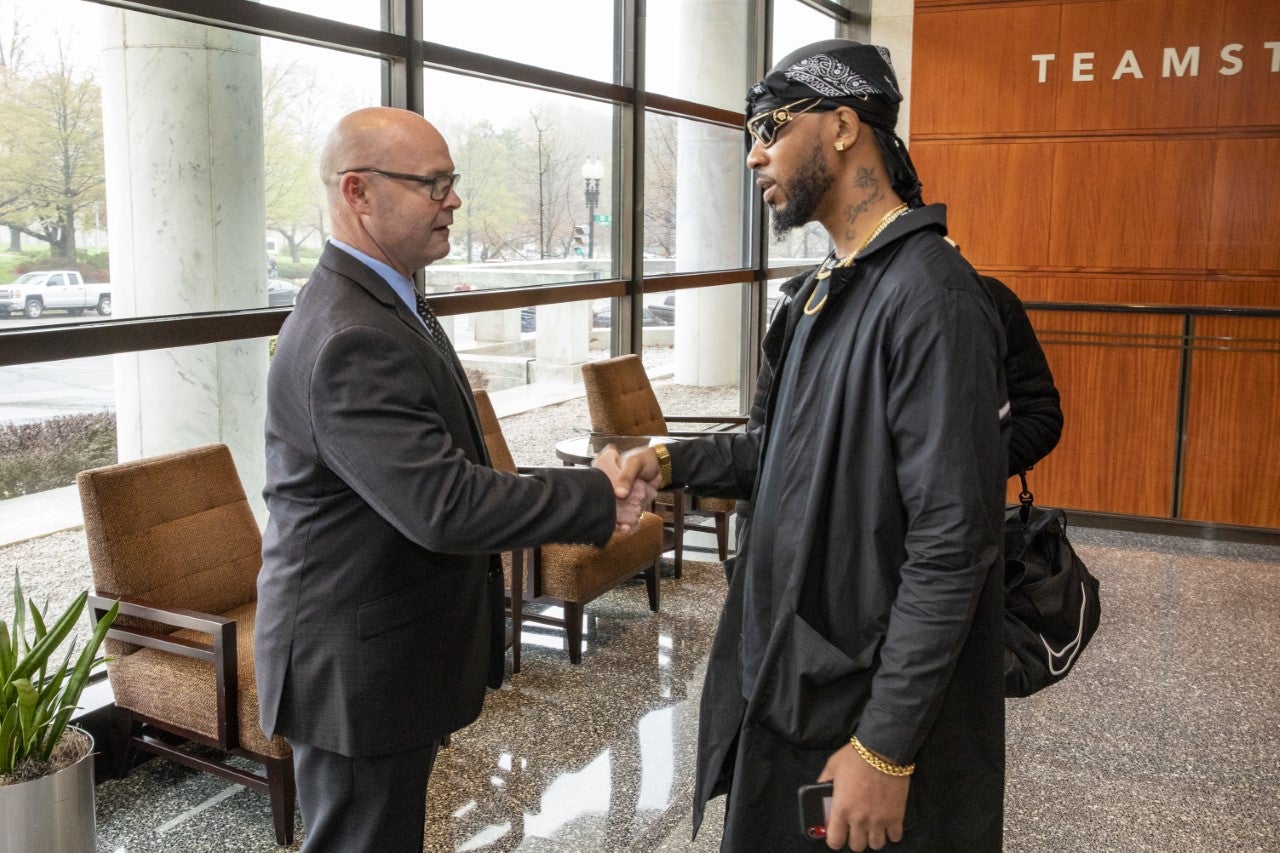News
A Better Way: Why Unions Are Needed at Amazon

As Amazon dominates online marketplaces and positions itself to become the largest retailer in the U.S., more and more people are finding out the true cost of the company’s success. While the company consolidates power over multiple markets – tech, entertainment, retail and more – it is maiming and burning through its staff at a rate unlike anything ever seen at any other U.S. business in our lifetimes. Fortunately, there’s a solution to make Amazon work better for its customers and its workforce.
Amazon’s Epidemic of Workplace Injuries
It’s no secret that Amazon’s abysmal safety record has been a source of public embarrassment for the company. In his first letter to Amazon Shareholders, CEO Andy Jassy said that the company was “passionate about further improving safety in our fulfillment network, with a focus on reducing strains, sprains, falls, and repetitive stress injuries.”
According to a study by the Strategic Organizing Center, injuries at Amazon are more frequent and more severe than other employers in the warehousing and logistics industry. In 2020, for every 100 Amazon warehouse workers there were 5.9 serious injuries requiring the worker to either miss work or be placed on restricted duty. This rate is nearly 80 percent higher than the serious injury rate for all other employers in the warehousing industry.

In 2020 Amazon workers who experienced lost-time injuries were forced off work for an average of 46.3 days – more than a month and a half. That is a week longer than the average recovery time for workers injured in the general warehouse industry and more than two weeks longer than the recovery time for the average worker who suffered a lost time injury. In 2020, Amazon’s overall warehouse injury rate (6.5/100 FTEs) was over twice that of Walmart (3.0), while Amazon’s severe injury rate (2.6) was more than two-and-a-half times Walmart’s (1.0).
“We’re passionate about further improving safety in our fulfillment network, with a focus on reducing strains, sprains, falls, and repetitive stress injuries.”
Andy Jassy, Amazon CEO
Amazon workers sustained the most serious injuries—those that required them to be moved to light duty or miss work—at rates five times the national average for all of private industry. In spite of the fact that Amazon employs one third of warehouse workers in the U.S., the company was responsible for half of all injuries in this sector for 2021.

The Churn-and-Burn Business Model
Amazon loves to tout itself as an employee-friendly company, pointing to a myriad of perks it offers its workforce – $15 an hour starting pay, health insurance and tuition reimbursement are some of the purported benefits of working for the tech behemoth. What the company doesn’t mention is that hardly anyone they employ works at the company long enough to enjoy what it supposedly has to offer.
“Everybody at the company has the freedom—and really, the expectation—to critically look at how it can be better and then invent ways to make it better.”
– Andy Jassy, Amazon CEO
As a 2020 National Employment Law Project noted, Amazon’s inhumane work pace and repetitive work tasks require a level of physical exertion and strain that takes a high toll on workers’ physical health over time, which is why the company needs to constantly replenish its workforce with fresh bodies. Amazon’s turnover rate among its hourly associates is around 150 percent a year, which means the company loses more than 1 in 50 of its warehouse workers each week (nearly double the rate of similar businesses).
In spite of the fact that Amazon employs one third of warehouse workers in the U.S., the company was responsible for half of all injuries in this sector for 2021.
According to the NELP report, turnover at Amazon is so high that it causes overall regional job retention rates to plummet – turnover for all California warehouse workers (including Amazon) also grew from 42.1 percent in 2011 to 83 percent in 2017. In contrast, overall turnover for workers in all California industries only rose slightly, from 63.9 percent to 69.8 percent.

High Injury and Turnover Rates at Fulfillment Centers in California,” March 2020.
A Better Way

“Amazon is an abusive employer. They show total disregard for working people. It’s time to face the bully head-on.'”
Sean M. O’Brien, Teamsters General President
A union would give Amazon workers the voice on the job they need to make the company what it currently only pretends to be – one where shareholders do well because workers are doing well, not one where shareholders do well instead of workers doing well. It would give them the power to address safety issues, turnover, wages and other issues through the process of collective bargaining.
There’s already plenty of models for this throughout the American economy. Retail and logistics companies like Safeway, Costco, UPS, DHL and countless others all have heavily unionized workplaces that have proven to reduce injuries and turnover. These companies employ people who stay there for years, even decades, because organized labor has made their workers not disposable, but indispensable.
The recent win in Staten Island by the Amazon Labor Union (ALU) is just the beginning. Workers at the company are hungry for change, tired of being treated as disposable and demanding a better way of life. By banding together and organizing as Teamsters, workers at the company can fight to ensure that working at the company isn’t just a dangerous job for a few months, but a safe, sustainable, long-term career. This will benefit the company, its workforce and the entire American economy.